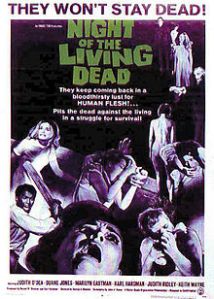Five days to go until NaNoWriMo begins. Now it’s getting real.
What’s the big deal? Why are you so stoked about NaNo? A 50,000 word novel in 30 days? Are you insane?
The big deal for me is this: My first time doing NaNoWRiMo in 2011 was revolutionary. It took my hobby of writing and moved me into establishing a daily habit of writing, making time for myself and my dreams, and whether I won or not, I was amazed at what I accomplished. For the record, I did not “win” in 2011. Not by their standards anyway. In 2011 I did not have a daily habit of writing. By November 30th –I was writing 1500 words per day average. Not a great deal, but a great deal more than I had been the previous months.
In January of 2012, I started blogging after talking with a friend I met online for nano and he suggested that blogging was a way to “stay in practice”. I liked it. You have him to thank for my continued blogging efforts! Blogging keeps me in practice when I hit a wall in my story. When the blogs are few and far between – you know I’m head down, butt in the chair typing my little heart out! Or life has left me gutted and reeling in pain. Or . . . both.
Why I’m stoked: With life’s demands, it’s very easy to get out of the habit of writing. And even though I’ve continued to write daily, I’ve let the amount I write daily slip. NaNo for me is about getting back to the basics. Getting rid of the bad habits, and re-establishing the habits that bring success as a writer. It’s also kind of cathartic – taking that deep breath and blowing out. This is what matters right now – focused writing efforts. Getting down the first draft. In one sense, I very much consider myself a winner each and every time I do NaNo for 3 reasons:
- I make my writing a priority and during NaNo my family knows not to disrupt the writing mojo.
- There is a firm word count goal. 1667 words a day is what it takes to reach the final finish line. I tend to do more at the beginning of the month because there are days I will not be able to write – like on Thanksgiving, unless I somehow manage to have energy at eleven at night to sit and type for about an hour. More than likely, I will be in a deep near comatose sleep at that time. (I do the cooking and yes it takes a lot of time and effort.)
- The goal is to get 50,000 words – a first draft down on paper, or virtual paper. You have to have something to work with. I’ve hit 50K and wasn’t finished with the story. Never the less, I had the words down. Which means there is something to work with for revisions and improvements.
OK, I’ll admit that on more than one occasion, when I’ve tackled the revisions of that first draft I am scratching my head thinking – what in the wide world of NaNo-dom was I thinking? Half of what I had written was rewritten or removed. However, I had something to work with. You can’t work with what’s not written.
You can revise anything but you can’t revise nothing.
(Kind of sounds like a Yogi-ism doesn’t it??)
A 50,000 word novel in 30 days? Are you insane? Yes, 50,000 words in 30 days. 30 days of literary abandon. It sounds crazy, but in all honesty this really isn’t that much. For the newbie that isn’t in the habit – it’s a LOT. But to be honest, when the writer is in the flow state – 1500 or more words in an hour are easily obtainable. Looking at it from that perspective, for the writer that has prepared for NaNo by writing an outline, it will take approximately an hour and a half a day to achieve the goal. I will gladly give up tv for that amount of time. I’ll give up the internet distractions.
Let me just say here, speaking from the voice of experience – in 2011, I had a vague notion of what I would write. Totally pantsed it! I ended up with 85000 words written, deleted most of it down to 47000 as pantsing it took my story down rabbit holes and trails that had nothing to do with progressing the story. Word of advice – DO NOT DELETE! I revised and edited as I went – DON’T! You can edit come December 1st. That story is still in my files, because it was such a mess. Last year I took Lazette’s outline advice and it is GOLDEN! I’m telling you, this method is like the easy button for me! I have hard copy index cards paper clipped together, that I add details on the back as I think of them. One for each day of the month. Today I will be adding more details to each one.
In regards to the second half of that question – YES! but that has nothing to do with NaNoWriMo.
Get a system that works for you and kick NaNo’s butt! Now for the BONUS, I am leaving you with a bit of information that might help you get your NaNo novel off the ground. It’s a bit dry, sort of classroom lesson-ish, but it shows you a few options. This is bare bones, down to brass tacks but it might help you take a step in the right direction for your story.
Story Themes
All stories have these four common elements that can determine story structure: milieu, idea, character, and event. All are present but which one dominates in your story? (The next section is copied from an article by Orson Scott Cards.)
THE MILIEU STORY
Milieu is the world—the planet, the society, the weather, the family, all the elements that come up during your world-building phase. Every story has a milieu, but when a story is structured around one, the milieu is the thing the storyteller cares about most. For instance, in Gulliver’s Travels, it mattered little to Jonathan Swift whether we came to care about Gulliver as a character. The whole point of the story was for the audience to see all the strange lands where Gulliver traveled and then compare the societies he found there with the society of England in Swift’s own day—and the societies of all the tale’s readers, in all times and places. So it would’ve been absurd to begin by writing much about Gulliver’s childhood and upbringing. The real story began the moment Gulliver got to the first of the book’s strange lands, and it ended when he came home.
Milieu stories always follow that structure. An observer who sees things the way we’d see them gets to the strange place, observes things that interest him, is transformed by what he sees, and then comes back a new person.
This structure is most common in science fiction and fantasy, but it also occurs in other types of novels. James Clavell’s Shogun, for instance, is a milieu story: It begins when the European hero is stranded in medieval Japan, and it ends when he leaves. He was transformed by his experiences in Japan, but he does not stay—he returns to his world. Other stories are told along the way—the story of the shogun, for instance—but regardless of how much we’re drawn into those events, the real closure we expect at the end of the story is the main character’s departure from Japan.
Likewise, The Wonderful Wizard of Oz doesn’t end when Dorothy kills the Wicked Witch of the West. It ends when Dorothy leaves Oz and goes home to Kansas.
When writing a milieu story, your beginning point is obvious—when the character arrives—and the ending is just as plain: when she leaves (or, in a variant, when she decides not to leave, ending the question of going home).
Such stories are typically most effective when seen through the viewpoint of the arriving character, as she’ll be surprised by and interested in the same strange and marvelous (and terrible) things that engage the readers.
THE IDEA STORY
The structure is very simple: The idea story begins by raising a question; it ends when the question is answered.
Most mysteries follow this structure. The story begins when a crime takes place. The question we ask is, “who did it and why?” The story ends when the identity and motive of the criminal are revealed.
In speculative fiction, a similar structure is quite common. The story begins with a question: Why did this beautiful ancient civilization on a faraway planet come to an end? Why are all these people gone, when they were once so wise and their achievements so great? The answer, in Arthur C. Clarke’s “The Star,” is that their sun went nova, making life impossible in their star system. And, ironically, it was the explosion of their star that the wise men saw as the sign of the birth of Christ. The story is told from the point of view of a Christian who believes that this must have been a deliberate act of God, to destroy a beautiful civilization for the sake of giving a sign to the magi.
When writing an idea story, begin as close as possible to the point where the question is first
raised, and end as soon as possible after the question is answered.
THE CHARACTER STORY
Character stories focus on the transformation of a character’s role in the communities that matter most to him. Sure, in one sense, stories are almost always “about” one or more characters. In most stories, though, the tale is not about the character’s character; that is, the story is not about who the character is.
The structure of a character story is as simple as any of the others. The story begins at the moment when the main character becomes so unhappy, impatient or angry in her present role that she begins the process of change; it ends when the character either settles into a new role (happily or not) or gives up the struggle and remains in the old role (happily or not). Most romances are character stories. The story begins with the protagonist’s unhappiness at being alone. The process of change begins right away, and the protagonist either learns about themselves and realizes they are happy with who they are with the love interest, or they realize how the love interest has changed them and their lives for the better.
THE EVENT STORY
In the event story, something is wrong in the fabric of the universe; the world is out of order In all cases, a previous order—a “golden age”—has been disrupted and the world is in flux, a dangerous place.
The event story ends at the point when a new order is established or, more rarely, when the old order is restored or, rarest of all, when the world descends into chaos as the forces of order are destroyed. The story begins not at the point when the world becomes disordered, but rather at the point when the character whose actions are most crucial to establishing the new order becomes involved in the struggle. Hamlet doesn’t begin with the murder of Hamlet’s father; it begins much later, when the ghost appears to Hamlet and involves him in the struggle to remove the usurper and reestablish the proper order of the kingdom.
Almost all fantasy and much—perhaps most—science fiction uses the event story structure.
Learn from Homer—and Tolkien, and all the other writers who have handled the event story well. Begin small, and only gradually expand our vision to include the whole world. If you don’t let us know and care about the hero first, we won’t be around for the saving of the world. There’s plenty of time for us to learn the big picture.
(The 4 Story structures that dominate novels by Orson Scott Card, August 24, 2010 for Writer’s Digest)
What type of story are you writing?
Write on my friends, write on!



















You must be logged in to post a comment.